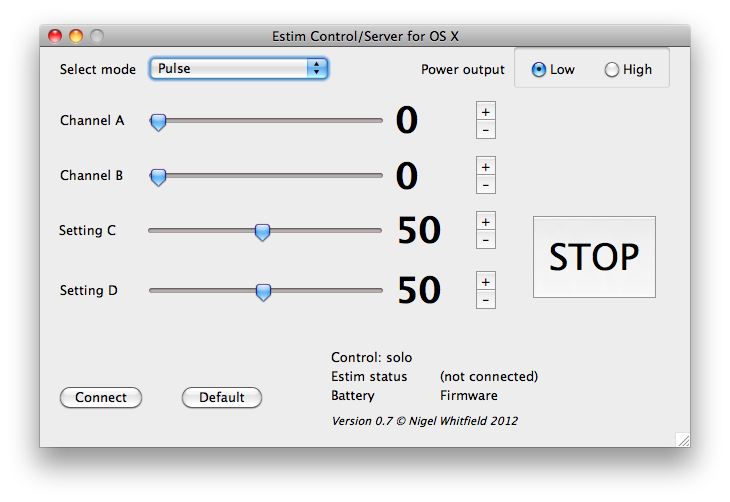
E-Stim Connect is the software that allows you to connect an E-Stim Systems 2B to our E-Stim Connect Server, and thus allow a remote partner to control your 2B over the Internet.
Functional Electrical Stimulation (FES) The g.Estim FES is a constant-current, biphasic electrical stimulator intended for powered muscle stimulation. Download sql server 2008 r2 standard 64 bit iso. G.Estim FES has an applied part of type BF with connectors for bipolar stimulation electrodes (anode and cathode).
The device is controlled by a computer via USB connection. It also has digital outputs for synchronization with other devices. An optional hand-switch allows you to perform stimulation manually. Alternatively, an optional foot-switch can be used to explicitely enable/disable stimulation. G.Estim FES includes an impedance measurement function and contains a high-impedance stop mechanism that stops stimulation when electrode contact becomes loose. The g.Estim FES is intended for temporary relaxation of muscle spasms, prevention or retardation of disuse atrophy, increasing local blood flow in the treatment area, muscle re-education, prevention of post-surgical phlebo-thrombosis through immediate stimulation of calf muscles, maintaining or increasing range of motion.
Therapeutic use of g.Estim FES The indication for usage of the g.Estim FES for muscle stimulation is given when muscles of the body that are partly or fully paralyzed due to injury to the central nervous system should be contracted to generate movement. This is the case for example in patients with stroke, spinal cord injury, multiple sclerosis, or cerebral palsy, where rehabilitation programs or assistive devices such as orthoses are indicated that aim for recovery or substitution of the impaired function. For closed-loop experiments, g.USBamp, g.HIamp or g.Nautilus with g.HIsys is used to record EEG/ECoG data, perform real-time analysis and to control the g.Estim PRO for cortical stimulation. Every device that is found is listed with its serial number in the drop-down box at the left side of the panel. Via the drop-down box, another connected device can be selected. Scenka o kurenii po 5 minut live. As soon as a device is selected an initial self-test is executed on the device to assure correct functionality. During the self-test, the LED indications of the device are switched on and off.
Passing this test is crucial for a safe and accurate operation of the device. The button Refresh updates the device list when a new device was connected to the computer since the software was started. The button Selftest repeats the self-test for the selected device. The button Device Info displays information about the selected device, like its hardware and firmware versions.The battery gauge at the very right side displays the battery charge of the selected device. In the second line of the group it is possible to select whether the optional accessories hand switch or foot switch should be used in the stimulation session. • When Software only control is selected, the g.Estim FES is solely controlled by the user interface application.

• The hand switch allows users to start stimulation by pressing the STIMULATE button after the device has been set active via the software and the ‘READY’ LED is on. During stimulation, it allows users to abort stimulation by pressing the ABORT button. • When the foot switch is pressed, the stimulator accepts starting stimulation from the software. When the foot switch is released, stimulation is aborted and it is not possible to start. The Settings group summarizes the settings for the stimulation session. There is a simple structure of Work times and Rest times that divides the delivery of the stimulation with resting periods.
The Ramp up time and the Ramp down time is the amount of time it takes the stimulation to ramp up to full intensity at the beginning of the work period and to ramp down at the end of the work period, respectively. The Pulse rate per second specifies how many individual stimulation pulses per second are presented during the work time.